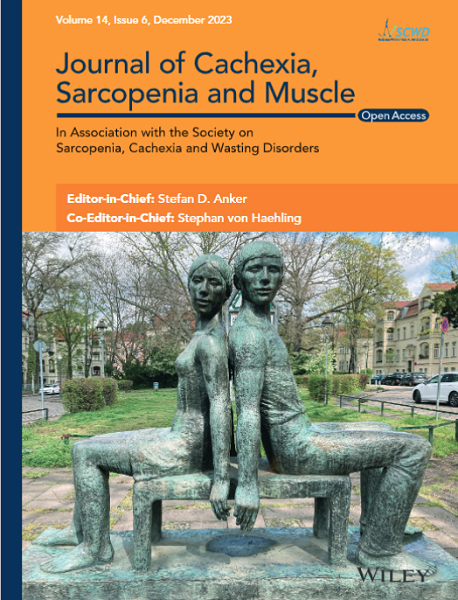Sarcopenia severely affects the physical health of the elderly. Currently, there is no specific drug available for sarcopenia. This study aims to identify pathogenic proteins and druggable targets for sarcopenia through Mendelian randomization (MR)–based analytical framework.
A sequential stepwise screening method that includes two-sample MR, Steiger filtering test and colocalization (MRSC) was applied to identify causal proteins associated with sarcopenia-related traits. In the MR analyses, 4372 circulating proteins with valid instrumental variables (IVs) from eight proteomic genome-wide association studies were utilized as exposures, and nine sarcopenia-related traits were utilized as outcomes. IVs were classified into cis–protein quantitative trait loci (pQTLs) and trans-pQTLs based on their positions. We conducted cis-only MRSC analyses and cis + trans MRSC analyses using cis-pQTLs and cis + trans pQTLs as IVs, respectively. Post-MRSC analyses were conducted on the prioritized findings of MRSC, including annotation of protein-altering variants (PAVs), assessment of overlap between pQTLs and expression quantitative trait loci (eQTLs), protein–protein interaction (PPI) analysis, pathway enrichment analysis and annotation of drug targets. Utilizing data from the UK Biobank, we performed an observational study to explore the associations between baseline circulating protein levels and the longitudinal changes in nine sarcopenia-related traits.
A total of 181 causal associations for 65 proteins were prioritized by the cis-only MRSC analyses and 227 associations for 91 proteins were prioritized by the cis + trans MRSC analyses. Among the prioritized proteins, the majority of them employed non-PAVs as IVs and most of their cis-pQTLs overlapped with corresponding eQTLs and exhibited consistent directionality, with only one trans-pQTL overlapping with an eQTL. The PPI network of cis-only MRSC-prioritized proteins (p = 4.04 × 10−4) and cis + trans MRSC-prioritized proteins (p = 8.76 × 10−5) showed significantly more interactions than expected. Reactome, KEGG and GO pathway enrichment analyses for cis-only MRSC-prioritized proteins identified 52, 12 and 79 enriched pathways, respectively (adjusted p < 0.05). For proteins identified by cis + trans MRSC analyses, only 15 pathways were enriched through the GO pathway enrichment analyses. In the observational study, 197 circulating proteins were identified to be associated with one or more sarcopenia-related traits (p < 0.05/2923). Among them, the significant associations of CTSB (negative association) and ASGR1 (positive association) with sarcopenia-related traits were observed to have consistent directional associations in both MR-based studies and observational studies. Drug target annotations suggested that 52 MRSC-prioritized proteins and 145 biomarkers are drug targets or druggable.
This study identified 89 potential pathogenic proteins and 197 candidate biomarkers for sarcopenia, providing valuable clues for the development of therapeutic drugs for sarcopenia.



